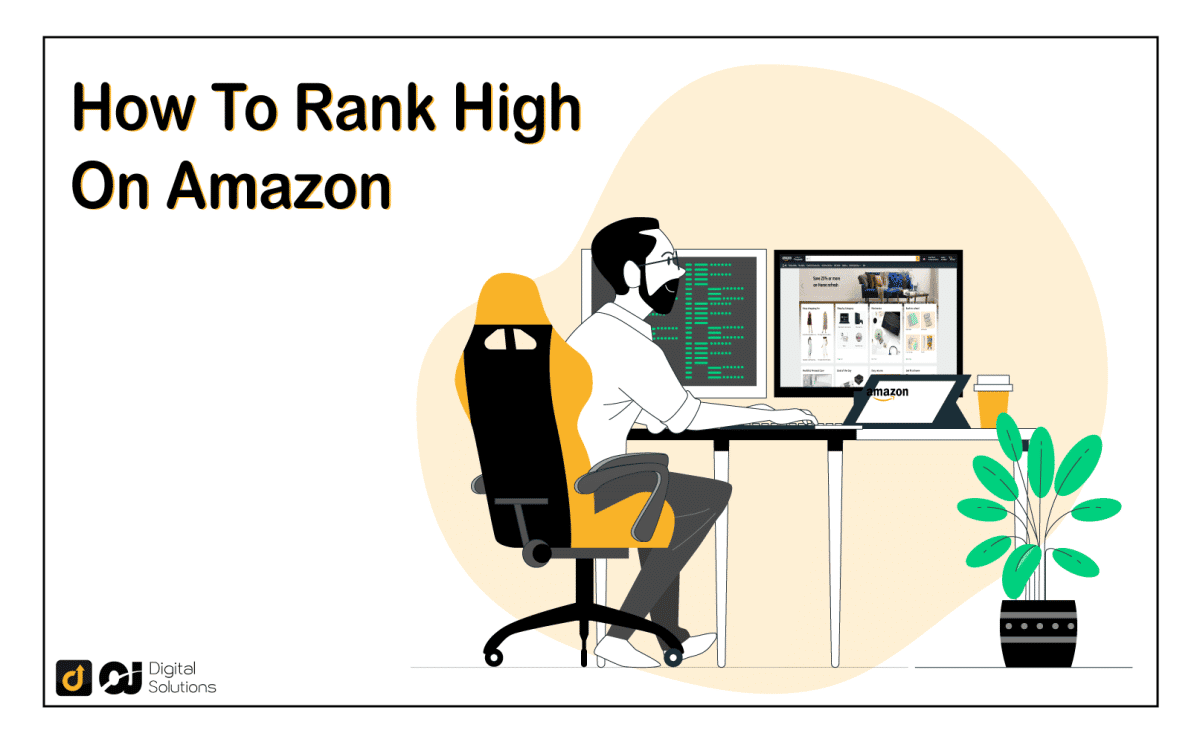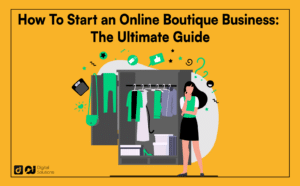The bulk of purchases on Amazon happen on the first page of results. 70% of buyers never click past it!
The first page is prime real estate every seller should be aiming for, one that’s highly exclusive. Amazon only shows around 48 products on the page.
Naturally, the top question on every seller’s mind is, how to move up in Amazon and become one of those 48?
The answer is deceptively simple: Improve your Amazon Product Rank.
Yet any Amazon seller who’s been faced with zero external traffic even after writing killer copy and taking beautiful product photos will tell you how frustrating it can be to crack the secret behind how to rank higher on Amazon.
Below, we’ve created a guide on how to increase your visibility to search engines. If you’re ready to discover how to get your product on the first page of Amazon, read on!
What is Amazon Product Rank?
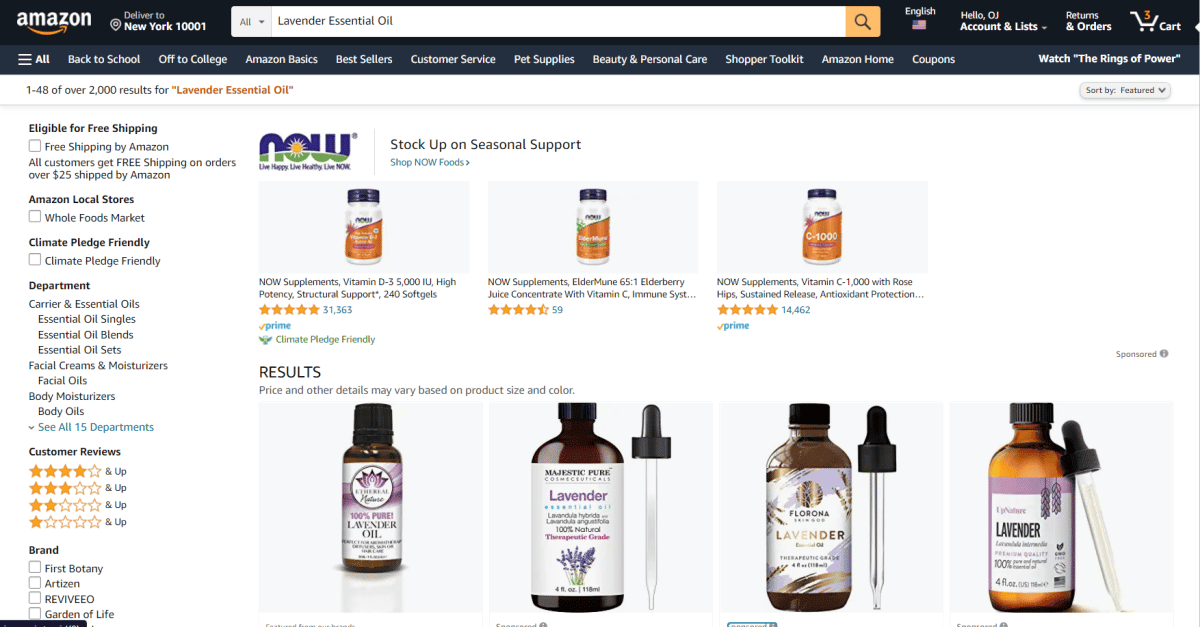
Amazon Product Rank is the position product listings take on organic search results. When someone types “Lavender Essential Oil” on the search bar, and your product appears as the 3rd search result, then that’s your search ranking.
Just how well do I rank on Amazon, you may ask
That depends on the search terms that you’re targeting. Product listings can have multiple rankings, just as consumers can have different reasons for searching for your item. That bottle of Lavender Oil’s Amazon search ranking as a “gift for mom” can vary greatly from its rank for “aromatherapy oils”.
Why is Product Ranking Important?
When you enter a store, finding an item you need can be as simple as asking an attendant.
On online e-commerce platforms, customer search works differently. Software doesn’t parse speech the same way we do. Amazon uses algorithms–basically a set of criteria–to comb through its massive volume of product listings. Currently, Amazon is using the A10 Algorithm to power search rankings.
Your Amazon Product Rank is a reflection of how well your listing meets those instructions. The algorithm is the attendant. If the A10 algorithm decides your product is exactly what a customer is asking for, then it pushes it to the top of search results. As a merchant, you’ll want the attendant to believe your product is what the customer needs.
How To Rank on Amazon’s Search Results
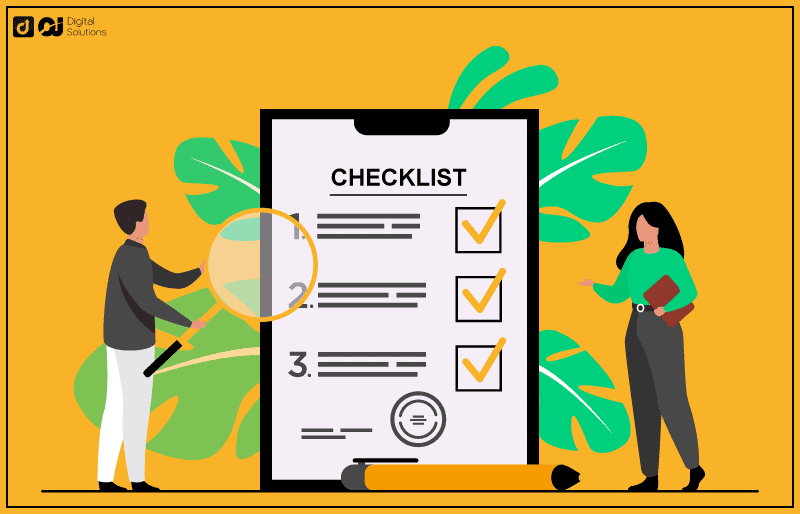
Like any ecommerce platform, purchases are king on Amazon. But in order to increase their conversion rate, Amazon has to constantly improve their Amazon search algorithm. After all, the faster customers find what they’re looking for, the less likely they are to go to the next store over. Satisfied customers also improve customer retention.
As such, Amazon’s search engine algorithm is constantly being tweaked to improve the customer shopping experience.
The company doesn’t publicly discuss exactly how they compute for relevance, but through testing we at least know that it’s a combination of several factors like SEO, reviews, competitive pricing, and Amazon PPC campaigns.
The latest update, unofficially dubbed “A10”, doesn’t introduce any groundbreaking changes. Rather, we see a change in how these factors are scored.
Customer searches have been given more weight, meaning metrics that influence organic product search and overall customer satisfaction are now more important than ever. But what exactly are the most important ranking factors, and how can you work with them to increase Amazon search results?
Amazon Sales Rank & Sales Velocity

Amazon Sales Rank, otherwise known as the Best Sellers Rank (BSR), is how many products you sell over a period of time relative to your competitors. Exactly how long that period of time is, no one knows for certain.
But there are some things we do know. Like your Amazon Product Rank, Sales Rank varies per category or subcategory. Amazon also takes into account your overall sales history when calculating your rank. A product with consistent, sustained sales will score higher than a product whose performance spikes and dips. Why?
That still all boils down to improving customer satisfaction. Dips can mean you’re struggling to supply the demand, or maybe negative reviews are tanking sales. Whatever the reason, what Amazon sees is that something is causing customers to stop buying, and docks points accordingly.
It’s also worth noting that Sales Velocity plays a critical role in ranking. This is defined as the number of people buying your product through a particular keyword per day compared to a competitor already ranked on page 1 for that keyword.
So, in short, if you get more sales per day through a specific keyword compared to a competitor, Amazon understands that your product is relevant for that keyword, and will rank it higher.
Product launch tools like Viral Launch do an excellent job in helping you rank quickly using sales velocity.
We also know that more weight is given towards recent sales volume, which means it’s in your best interest to make sure your listing launches at full speed right out of the gate. Some of the ways you can start strong is through Amazon PPC campaigns or lowered pricing. Yet many sellers don’t have the budget for ads or the room to cut into profit margins any further.
One way to grow Amazon search results that every seller can do? Amazon SEO.
Listing Search Engine Optimization
Earlier, we talked about how Amazon uses certain criteria to evaluate your product detail page and match it to buyer searches. Amazon SEO is the process of tweaking different elements of your listing to boost product visibility, and to convince the algorithm that your product is what your target customer is looking for.
There are several elements sellers need to pay attention to during Amazon SEO if they want to improve the the amazon rankings.
Amazon SEO tools such as Helium10 or ZonGuru allow you to fully optimize your product listing, which ultimately help your listing rank higher. But you need to learn more about the correct methods to do so the right way.
Title Optimization
Amazon SEO places your Product Title on a pedestal. The company has warned that Titles that don’t comply with requirements will be invisible on amazon’s search results. So you may have an incredible product, but without an optimized Product Title, you’re sunk even before you launch.
Amazon lays out a comprehensive list of Do’s and Don’ts that includes which characters not to use, recommended length, and words to avoid. Any seller can follow these and create a decent Title. Focus on the customer experience. Always make sure your Title is easy to read and informative, and contains relevant keywords integrated naturally into the text.
No search terms stuffing–that’s an outdated strategy from the early days of SEO when algorithms were less sophisticated and didn’t care much for the user experience.
Optimize Image Quality
Product photos have a massive impact on the user experience, especially on ecommerce platforms. People can’t touch or test a product, and customers rely on what they see.
Amazon wants to ensure customers are fully informed before buying, as that reduces return rates and loss of sales. That means that you need professional high quality images and showcase products clearly. No blurry or dim photos, and the product needs to occupy 85 percent of the frame.
Pictures for products in some categories like Books and Music have specific requirements, so make sure you’re meeting them so Amazon doesn’t penalize your ranking for non-compliance.
Adding bullet points
After your Title and Photos, the Bullet Points are your customer’s next stop on your listing. Here’s where you get the chance to convince customers to choose you over competitors by highlighting key product features.
More than that, these play a critical role in boosting your organic traffic because they are indexed. That means the A10 algorithm directly combs through the copy to determine product ranking. Along with your Title and Search Terms, the Bullet Points present an opportunity to directly tell the search engine what your product is through valuable keywords.
Product Listings Description
Unlike Titles, Bullet Points, and backend search terms, Product Descriptions are not fully indexed (in some cases phrases are, but it’s better not risk it). Found at the bottom for desktop users and at the top for mobile users, some customers may even scroll past it.
But don’t discount the power of a well-written Product Description. A good description can be what finally convinces a customer to choose your item over a competitor’s, generating sales and influencing your organic rank. This is also a great space to talk about details that you don’t have space for in your Titles and Bullet Points.
If your brand is registered on Amazon’s brand registry, you can even have an Enhanced description called Enhanced Brand Content or A+ content, known to boost your listing’s conversion rate, which ultimately will help you rank higher on the search results pages.
Proper Keyword Research

There are several elements that influence your Amazon Ranking. But at the core of it, you’ll find your keywords. Proper keyword research is essential if you want to rise to the top. And choosing the best ones isn’t just a matter of picking terms with the highest search volume.
You also have to focus on your target audience, and take into account the number of sellers you’re competing with for specific amazon keywords. Long-tail keywords, or target keywords that are typically longer than 3 words, may get fewer searches, but the competition is less stiff. Conversion may also be likelier, given the specific nature of these words.
A good keyword research strategy balances popular and specific keywords to increase their rank in the relevant category.
Don’t use punctuation
Don’t use misspellings or synonyms
On an ecommerce platform like Amazon, misspellings and typos can cost you more sales.
Errors in the copy hurt the customer experience. Instead of focusing on your product, buyers are getting distracted by typos. Clean and grammatically sound copy also helps your brand establish trust and authority. Misspelled terms and keywords can also mean that the algorithm is not indexing your listing properly, which will significantly harm your Amazon Product Rank.
Avoid Negative Feedback
Around 93 percent of consumers check out reviews before checking out. Our brains are also wired to focus on the negatives. Even one negative review can drive a potential customer into the arms of your competitor. And clicking away is easy enough–Amazon buyers are not spoilt for choice.
Low ratings are also a clear indicator of substandard quality, placing you lower in the eyes of Amazon’s ranking system. Obviously, you’ll want to avoid negative feedback from ever happening in the first place. Some of the ways you can do that is by maintaining a minimal stock level, taking professional photos that showcase the product clearly, and writing detailed descriptions to set customer expectations.
Optimize Order processing speed

Anyone who has ordered an item online knows the thrill of waiting for a product–and the subsequent disappointment when it doesn’t arrive on time. Or, takes weeks.
In an era when same day shipping is considered a competitive edge, you can’t afford to lag behind. While not all sellers will be able to offer same day delivery, you can keep customers happy by shipping on the expected ship date.
Amazon also enforces a strict 4% Late Shipment Rate (LSR) policy. Failing to meet that requirement can lead to getting your seller-fulfilled account deactivated.
Reduce Order Defect Rate
The Order Defect Rate (ODR) is the metric Amazon uses to measure the customer experience after the sale. You can find it on your amazon seller central account. It’s determined by three variables: Negative Feedback Rate, A-to-z Guarantee Claim Rate, and Credit Card Chargeback Rate.
Negative Feedback Rate is the ratio of one or two-star ratings you receive in proportion to the number of orders you’ve received. A-to-z Guarantee Claim Rate is the volume of relevant return claims you receive over a 60-day period. Lastly, Credit Card Chargeback Rate reflects chargeback claims that may be because buyers didn’t receive their item, received a defective item, or haven’t received their refund.
A low ODR tells Amazon that customers are happy and satisfied. With the company’s resolute drive to improving the consumer experience, sellers are expected to maintain an ODR no higher than 1%.
Answered Questions
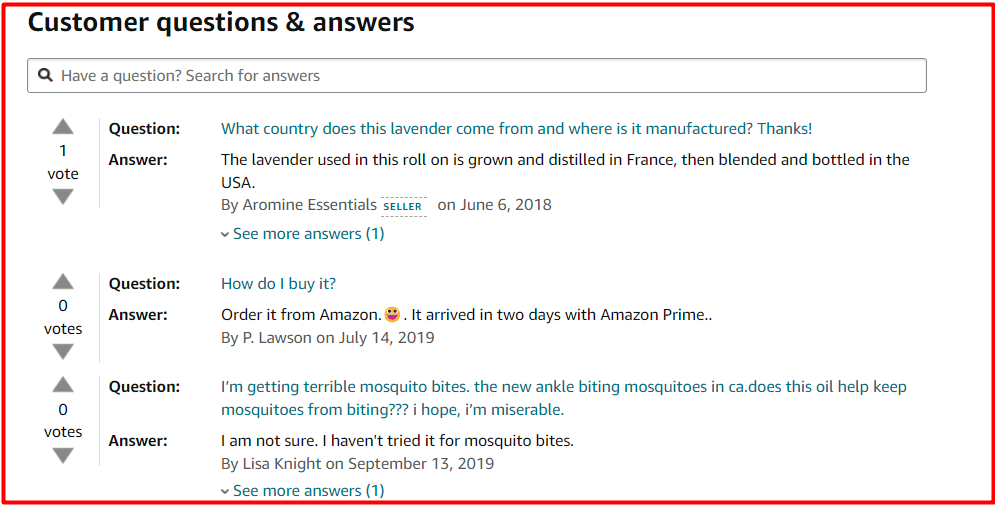
The Customer Questions section of your listing is a place where potential customers can ask questions. Both previous online shoppers and the Amazon seller can answer questions, underlining the importance of writing about a product accurately.
While your Customer Questions won’t be indexed by Amazon’s ranking algorithm, they can still indirectly affect your Amazon Product Rank. Sellers who give relevant and complete information build authority and trust, increasing chances of getting conversions.
Exit Rate
Your Exit Rate is the number of customers who view your listing, and then leave Amazon for whatever reason. Naturally, Amazon wants to keep that turnover low. If customers keep bouncing away from your listing, the algorithm can take that as a signal to stop recommending it.
Frequently Asked Questions
Why is Amazon turnover so high?
Customers can leave Amazon listings for a number of reasons. You may not be targeting the right keywords, and so are getting visitors who don’t need your product. High exit rates can also be a result of having copy that’s difficult to read, or failing to highlight a key feature of your product.
How many keywords does Amazon allow?
Essentially, you can use as many keywords as you like. However, there are limitations to how many bytes you can use. For your Title, you’re only allowed 200 bytes. Some product categories may require shorter Titles. Only the first 1,000 bytes of Bullet Points are indexed, so make sure you seed keywords within that first thousand. Your backend keywords field can only accommodate up to 250 bytes.
Ready To Improve Search Results?
The science behind how to rank high on Amazon and how to optimize your product listings can seem intimidating to navigate. When in doubt, circle back to one thing: the customer experience.
Choosing the keywords that are relevant to your audience, optimizing the listing so it looks good and reads well, and great customer service will all help you nab a spot on that coveted first search engine results page.

